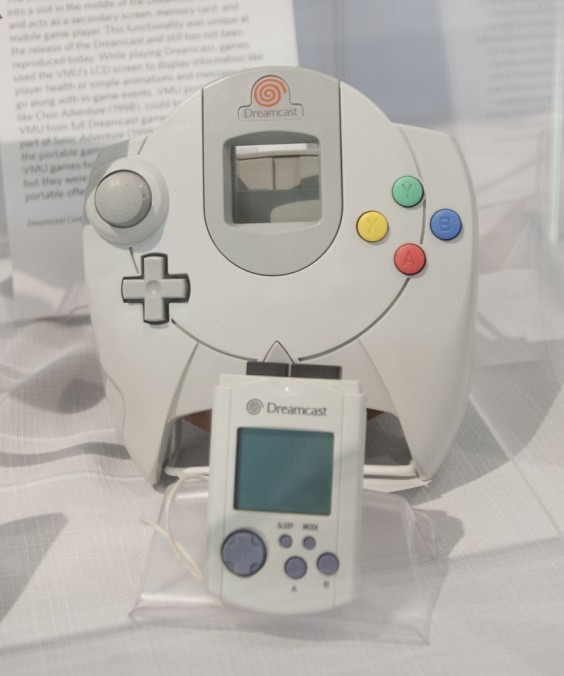Evolution of the Console Controller – Dreamcast Controller and VMU (1998)
The Dreamcast controller is similar in layout to the Sega Saturn 3D controller before it, though it actually features two fewer action buttons. It retains the analog stick and two analog triggers of its predecessor, while adding two slots in the center of the controller capable of using expansion cards like a rumble pack or VMU.
The Dreamcast VMU (Visual Memory Unit) plugs into a slot in the middle of the Dreamcast controller and acts as a secondary screen, memory card, and mobile game player. This functionality was unique at the release of the Dreamcast and still has not been reproduced today. While playing Dreamcast, games used the VMU’s LCD screen to display information like player health or simple animations and messages to go along with in-game events. VMU portable games, like Chao Adventure (1998), could be uploaded to the VMU from full Dreamcast games. Chao Adventure was part of Sonic Adventure (1998), and player progress in the portable game could have effects in the main game. VMU games hold a notable place in console history, but they were typically simple and outclassed by other portable offerings.
Up to Analog Era – Back to Sony PlayStation DualShock – Forward to Wii Classic
On loan from Scott Kornahrens

